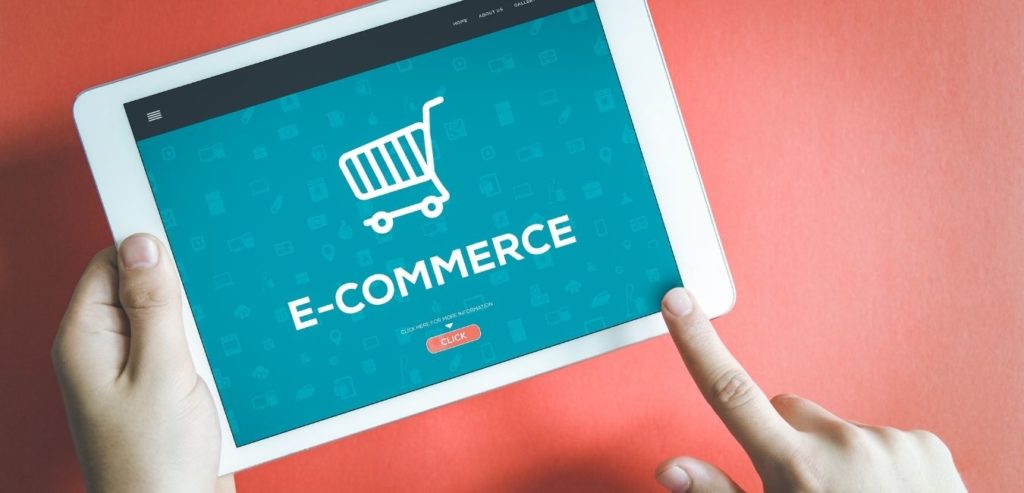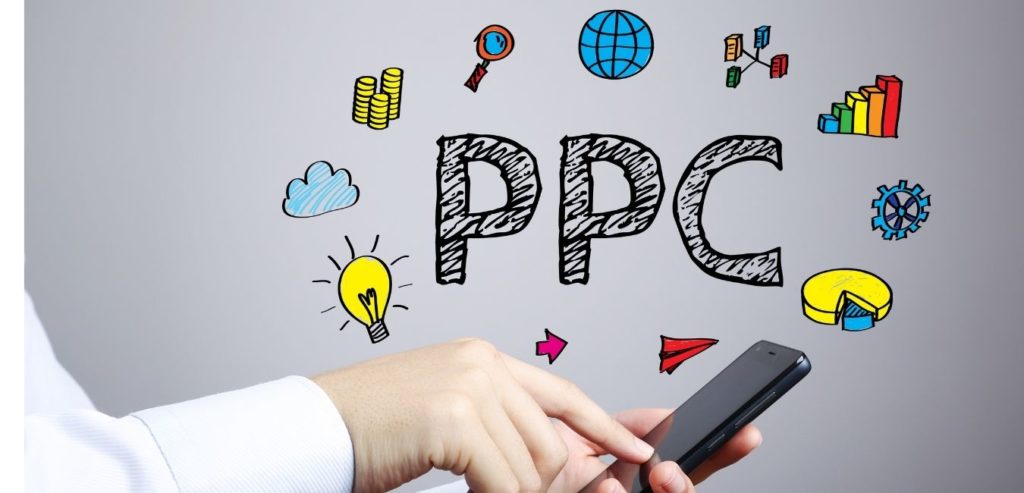

Quick Links
Quick Links
Online shopping is one of the most popular online activities worldwide. In fact, according to Statista, in 2020, retail e-commerce sales worldwide amounted to 4.28 trillion USD. Meanwhile, retail revenues are projected to grow to 5.4 trillion USD in 2022.
Ecommerce is showing no signs of slowing down especially now in the time of the COVID-19 pandemic. A report from Shopify about the trajectory of e-commerce revealed that the lockdowns that forced many brock and mortar retailers to close allowed online businesses to reach an all-time high of 16.4% of total global retail sales.
The future of eCommerce remains bright and if you want to get in on the action, there’s no better time to start than now. However, building a thriving online business can entail a lot of hard work and research.
If you’re unsure who to start launching your eCommerce business then you’ve come to the right place. In today’s blog, we’ll b guiding you through the process of starting an eCommerce business. We’ll also be sharing with you some strategies that will help you make money. Let’s get started!
Business Models to Consider
The first thing you need to understand before starting an eCommerce business is the different business models you can use. These general categories determine who is doing the buying and who is doing the selling.
There are 4 traditional e-commerce business models and each has unique benefits and challenges. Understanding which model fits your target niche, resources, and capabilities will help improve your chances of running a successful company. It will also help you find opportunities and find out if there are any threats you need to prepare for down the line.
Business-to-Business (B2B)
The B2B eCommerce model is structured in a way that you will sell your products or services to other companies. Often, the goal of companies that use this model is to enhance or improve their clients’ practices and processes.
The buyer could be the end-user of the product but they could also resell it to their customers. With B2B transactions, the sales cycle is often longer but the order value is higher with more chances for recurring purchases.
Companies that are involved in this business model are typically in wholesale, manufacturing, and distribution. But companies selling enterprise software is also common.
Business-to-Consumer (B2C)
Perhaps the most typical eCommerce business model, B2C is a involves retailers selling directly to the end consumers through an online store or a mobile app. You can sell almost anything using this business model from clothing, books, cosmetics, supplements, and more.
With eCommerce B2C, you tend to serve a wide audience so there is a need to prioritize marketing and sales strategies like ads-based marketing, influencer marketing, social media, optimizing traffic to your online store, promoting your campaigns, and improving sales conversions.
Consumer-to-Consumer (C2C)
The C2C business model involves providing a platform so that consumers can sell, buy, and exchange goods or services with other consumers. Think of places like Etsy, eBay, Amazon, and Craigslist.
The main way to earn through this business model is by charging listing and transaction fees.
Consumer-to-Business (C2B)
The C2B structure involves individual entrepreneurs selling their products or services to businesses. Similar to the B2B model, the main goal of business owners using this model is to improve the way their clients do their business. This is typically used by business consultants, freelancers, and even social media influencers.
How to Find the Right Products
Choosing the right product to sell is a crucial part of your eCommerce business. It determines several aspects of your business including your marketing strategy, your fulfillment methods, pricing, branding, and even your future product development efforts.
If you’re still unsure about what you want to sell, then these may help you find the right product or product category to offer:
Solve a Pain Point
One of the easiest ways to find a product you can sell is to provide a solution to your customers’ pain points. Find a product that people can use to address an annoying and frustrating problem.
Appeal to Hobbyists and Enthusiasts
Consumers who are passionate about their hobbies tend to spend more on products that will improve their experience. For example, if your target market is interested in painting, you can sell handmade watercolors.
Find a Product Related to Your Interests
You can use your know-how to create and position a unique and profitable product for your eCommerce business. If you’re passionate about fitness and nutrition, you can sell your own line of shaker bottles that retain the right temperature for your sports drinks.
Hone In On Your Experience
Your professional experience can be an excellent source of inspiration for finding the right product or service to sell for your eCommerce business. If you’ve been in the financial management industry for a long time, you can sell a product that can help people improve their budgeting skills like a spending tracker or a how-to guide.
Look at What’s Trending
Popular trends are also a great resource for finding the right product. By knowing what people are buzzing about at the moment, you can capture a portion of the market by selling a product related to that trend.
Improve Existing Products
Customer reviews give you an insight into what people want to add or improve in existing products. By paying close attention to the shortcomings of your competitors, you can create something that people actually want.
How to Build an Online Store

The next important step to take when starting an eCommerce business is building an online store. This will serve as your storefront so your customers can shop for your products or services.
These days, don’t have to be a web development genius to create an online store. There are various eCommerce builders that make this process easy even if you have little to zero knowledge about website building.
The most popular choices these days include Shopify, Wix, and BigCommerce. These are dedicated eCommerce website builder that helps people build their very own online store. They have a number of sales tools and features that will make it easier for you to manage your eCommerce business including shipping, drop shipping, product management, abandoned cart recovery, multi-channel integration, and more.
The pricing for eCommerce builders may vary. Some plans go as low as $9 and as high as $300 a month depending on the features and integrations you want to have. So it’s just a matter of choosing which plan works for the size of your business and the goals you want to achieve.
Another great thing about eCommerce builders is that you can pick from thousands of templates. You can even customize them so your online store can have the features you need and you can customize the way customers navigate your store.
eCommerce builders also make it easier for you to set up payment methods and sort out your shipping settings. Most eCommerce platforms let you accept payments using either a:
- Merchant account and payment gateway
- Payment gateway packages
- Simplified card payment processing
Adding Products to Your Online Store
Regardless of the eCommerce building platform you use, you will need to add your products, some descriptions, images, and categories so that your customers will have a better understanding of what you are selling. A few things to keep in mind when adding products to your online store include:
- Avoid using complex jargon, cliches, and long sentences in your product descriptions.
- Explain the technical features of the product and highlight the benefits that your buyers will get from it
- Include SEO keywords in your product descriptions
- Use high-quality images
- Add zoom and 360-degree view options for product images
- Include variation images especially if your product comes in different colors.
How to Market Your Business
Online marketing plays a crucial role in turning your eCommerce business into a profitable venture. By implementing a well-rounded digital marketing strategy, you can:
- Reach and acquire more customers
- Gain visibility online
- Draw high-quality leads to your website
- Earn the trust and loyalty of your customers
- Build lasting relationships with your customers to increase your chances of gaining recurring business
Some of the marketing strategies you can implement to improve the profitability of your eCommerce business include:
Search Engine Optimization (SEO)
An important tenet of running an eCommerce business is that your customers need to find you when they search for your business online. So when they enter keywords related to your brand or product, your eCommerce website should be among the top search results.
Optimizing your website increases your chances of capturing highly qualified leads who are already interested in buying your products.
Pay-Per-Click Advertising (PPC)

In addition to working towards ranking for keywords and phrases organically, PPC also helps generate and drive traffic to your eCommerce website. You can use Google Ads to display ads for your business every time people search for a keyword that matches yours. When they click on your ad then that’s the only time you will have to shell out cash.
Social Media
Social networking sites like Facebook, Twitter, and Instagram are great platforms for getting the word out not only about your products but also about your promotions.
Furthermore, it’s a great tool for keeping your customers engaged, encouraging customer feedback, and building a loyal community for your brand.
Content Marketing
Creating and sharing valuable content is not only a great way to boost your search engine rankings but it’s also an excellent way to provide more value to your customers. This not only positions your company as a thought leader in your industry but also increases your chances of gaining loyal and well-informed customers.
Email Marketing

Email is an excellent complement for your content marketing efforts. You can share your latest updates and blog posts as part of a solid email marketing campaign. You can also use it to announce special sales, discounts, and promotions to encourage repeat purchases.
Start Your Ecommerce Business Today
Ecommerce is showing no signs of slowing down any time soon. So now is the best time to get in on the action. We hope these tips will help you jumpstart your next big business venture.
But if you’re still unsure about starting your eCommerce business then maybe the freelancers on the FreeUp marketplace can help.
By signing up today, you can get in touch with eCommerce professionals who can help you with everything from setting up your Shopify store to product sourcing and listing, to conversion rate optimization.

Enjoyed reading the article above, really it was very helpful